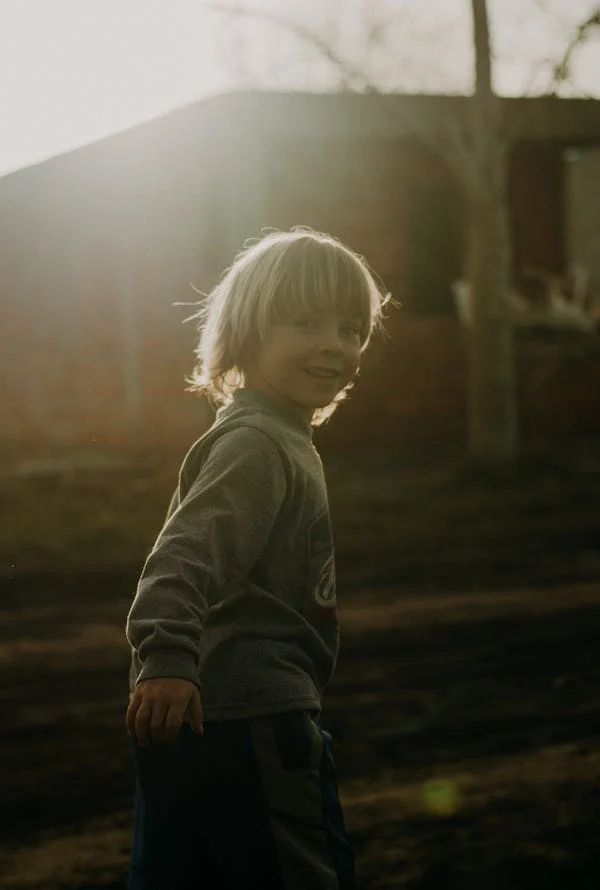|
Getting your Trinity Audio player ready...
|
Introduction
Rooted in growing emotions and limited language skills, tantrums are a typical stage of toddler development. Parents should concentrate on prevention (through routines, choices, and environment), emotional validation (without over-repeating), calm presence (by modeling self-regulation), gentle guidance (by means of redirection and problem-solving), and self-care (to sustain patience) to manage them without yelling.
Inspired by studies from the American Academy of Pediatrics, Dr. Laura Markham, Janet Lansbury, and the best parenting books, this Blog provides doable techniques to turn outbursts into teaching and connecting opportunities.
Knowing Toddler Outfits
Define a Tantrum
When toddlers lack the words or self-control to control strong emotions, they use a tantrum—crying, screaming, stomping, or kicking—to communicate their frustration.
Why Does Yelling Backfire Not Work?
Yelling increases stress, puts the parent in “fight” mode, and replicates the exact behavior we wish to avoid. It teaches kids that anger gets noticed rather than self-control.
Why Do Tantrums Start? Developmental Origins
Toddlers are still developing the brain circuits to control disappointment and frustration.
- Language Gap: Children with limited vocabulary turn to tears and screams to express their needs.
- Want for Independence: Toddlers test limits as autonomy develops and respond with strong emotions when denied.
Typical Influencers
- Basic Needs: A child can enter meltdown mode from hunger, tiredness, or overstimulation.
- Limits & Rules: Often, hearing “no” or being urged to stop a fun activity results in defiance.
- Transitions: A toddler may find it sudden and unfair to go from play to cleanup or leave a fun place.
The Reason Behind Calm Reactions in Science
The Brain Operating in Tantrum Mode

The toddler’s “thinking brain,” or prefrontal cortex, momentarily shuts off during a tantrum, leaving only the “emotional brain” in control.
Mirror Emotional Contagious Neurons
Young children learn from parental stress. A composed, under-control parent signals that it is safe to relax.
Stopping Tantrums Before They Start: Create Consistent Routines
Plan regular meals and sleep to prevent meltdowns brought on by hunger or tiredness.
Transitions: Give a five-minute heads-up before changing the activity to lessen surprise.
Present Restricted Options
Let young children choose between two acceptable choices (such as a red or blue cup), so empowering them.
Create a “Yes” surroundings.
Childproof a play area so the response to “Can I do this?” is usually yes, so as to lessen the frustration over forbidden objects.
Techniques to Calmly Control Tantrums
1. Stay close and safe
“Stay close” is the assurance of physical safety devoid of hovering. If invited, offer a hug or quiet presence, but steer clear of pushing touch.
2. Verify Emotions—once
Acknowledge emotions succinctly (“I see you’re angry”), then move to silent support instead of repeating the phrase that might encourage the outburst.
3. Speak in Simple Terms
“You’re mad,” or “That’s tough,” will help the young child connect words to feelings.
4. Refine & Diverts
Provide an other activity: “Want to build with blocks?” Toddlers most benefit from distraction when they are about to have a meltdown.
5. Model Deep breathing
Breathing slowly and deeply, invite the child: “Let’s blow bubbles with our mouths.” This common hobby calms both of them.
6. Mild Reversals
Should safety or respect be compromised—that is, if toys are thrown or hit—gently remove the child to a neutral area (a “calm-down corner”) with few words spoken.
Suggestions for Communication
Deliver in “With” Statements
- Try “I’m here with you,” not “Stop crying.” We can both cool off together.
Positive Reiteration
- Celebrate little victories: “You used your words! Great job! This supports desired behavior.
Stories and Books
- To develop emotional vocabulary, read age-appropriate books about emotions, like Todd Parr’s The Feelings Book.
Self-Care for Parents
Rest Periods
Ask a close friend or partner for a few minutes of respite when feelings run strong. mindfulness techniques
Two to three minutes of directed meditation or breathing will help to reset stress hormones.
Create a support system
For guidance and solidarity, join neighborhood parenting groups
Real-Life Situations and Solutions
Scenario: Meltdown in a Grocery Store
- What Happens: A young child wants a candy bar.Set expectations (“We’re here for apples, not candy”) and prevent by snacking before leaving.
- In-Moment: Talk about disappointment (“I know you want candy”). Offer the options (“Would you want an apple or grapes?”).
- Praise compliance: “You did great with your choice!”
Situation: Resistance to Bedtime
- Toddler yells, “No bedtime!”
- Prevent: Bedtime ritual including bath, story, lullaby at same time every night; in-moment: “I understand sad playtime is over.” Deliver one more book.
- Remember how we read last night? The next night.
Leading Psychologist Expert Views in Three Steps: Dr. Laura Markham
Before you fix, pay attention to the emotional situation of your child.
Tell them they are loved and safe, two reassurances.
The secret mindset of Janet Lansbury
Remembering tantrums helps one to adopt an “unruffled” attitude since they are normal and not personal assaults. Use them to work on presence and peace.
Emotional Story
Tears running down Lily’s rosy cheeks signaled the beginning of a tantrum that would try every bit of her mother’s endurance as Lily’s small fists hammered the living room carpet.
First-time mother Sarah watched her two-year-old thrash about, unable to express the anger behind those last sobs. It was bedtime, a time for peace and cuddles, but tonight sleep was disrupted by overstimulation and tiredness acting as a perfect storm.
Sarah felt her pulse quicken in the frenzy of blankets and evening books, the familiar need to speak rising up her throat. She recalled guidance from The Whole-Brain Child, though, urging parents to stay present and name emotions rather than volume levels. She inhaled deeply and said, “I see you’re upset, sweetie,” her voice steady in the middle of turmoil.
Lily’s wrath did not fade right away, but in that silent moment of empathy, their worlds started to line up.
Sarah softly led Lily onto her lap, encircling her shaking body with soft arms to ground her in safety. She just hummed a lullaby, a tune spun with love and patience, not demanding silence or chastising the tears. Lily’s howls faded minute by minute, the emotional dam opening to show small release interruptions.
Lily’s tangled curls rested against Sarah’s chest by the time the last notes faded, her sobs replaced by heavy, satisfied breaths. Mother and daughter found a new rhythm in the low glow of the nightlight—an unspoken awareness that emotions, no matter how wild, are honored, not suppressed.
Later, Lily fell asleep, and Sarah considered the change—a tantrum that might have turned into anger had she chosen to yell instead became a link to a closer relationship.
She came to see that every eruption has a message, a cry for empathy more than for discipline. And in deciding peace over volume, she imparted to her daughter a lesson far more instructive than momentary compliance: that love speaks louder than any shout.
Sarah not only survived Lily’s outburst that evening but also turned it into a teaching moment for emotional resilience that would help them both negotiate many storms still to come.
Frequently Asked Questions
1. Why shouldn’t I yell during a meltdown?
For both parent and child, yelling increases stress and feeds emotional contagion, compromising self-regulation abilities. Maintaining composure helps your child to learn the behavior you desire and creates a safe environment for normal emotional growth.
2. How can I help my child to validate her emotions?
To honor feelings without overstretching, use short sentences like “I see you’re angry.” By letting children know they are heard, validation diffuses intensity, so lowering frustration and providing the road to cooperative problem solving.
3. A “calm-down corner” is what?
Toddlers can process large emotions in a safe, comfortable environment, including pillows or stuffed animals in a calm-down corner. Keep it neutral—no screens or toys—then gently invite your child there, never as discipline.
4. Usually, how long are outbursts of behavior?
Most tantrums last two minutes or less and go away in five. Knowing this helps parents remain calm, consistent, and sympathetic; knowing the storm will pass if they remain these things.
5. When should I go to see a professional?
Should tantrums arise more than five times a week, last more than twenty minutes, or involve self-harm or aggression, think about seeing a pediatrician or child psychologist to rule out underlying problems and create customized plans.

Final Thoughts
Starting with a single decision—to react with empathy rather than escalation—transformational tantrums into teaching moments. Your toddler will develop lifetime emotional skills if you validate emotions, speak calmly, and model self-regulation.
Recall that every outburst has a message; your cool head decodes it into trust and growth.
About ready to implement these ideas? Start today by choosing one tip—perhaps naming emotions or designating a calm-down area—and work consistently from that point. In a parent’s notebook, track your development, noting what works and changing as necessary. Share your experiences for inspiration and new ideas with a local parenting group or internet community.
Dedicated to this conscious approach for one week, you will find that tantrums go from wild outbursts into chances for communication. To help you on your path, download our free “Calm Tantrum Toolkit,” including printable emotion cards and routine charts.












